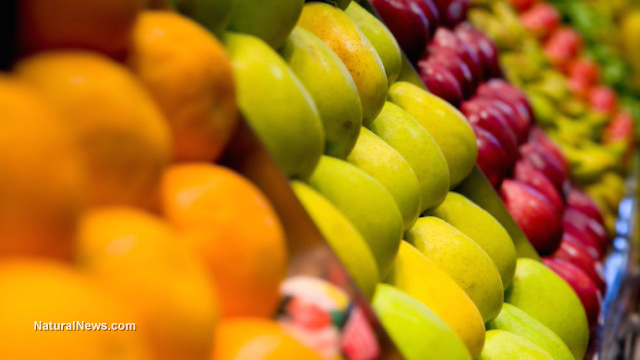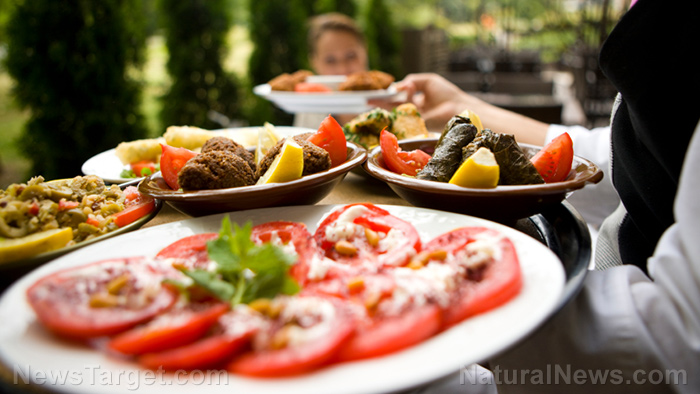Preventing food deserts in low-income areas: Research finds regional food sources provide healthier, more plentiful options
02/13/2019 / By Zoey Sky

Researchers from Cornell University have revealed that they have finally “analyzed where Northeast supermarkets source the foods they sell to their low-income customers.”
With data from these case studies, policymakers can learn how regional food systems can offer healthier food to low-income people in the Northeast part of the United States.
Miguel Gomez, co-author of the study, says that regional food stores are crucial to “the communities that they serve,” especially within both”very rural and very urban areas.” While they’re not as important in the larger national market when it comes to volume, without regional food stores these areas would experience a “food desert.”
The team of scientists observed 11 independent supermarkets – such as New York state stores in Harlem, Madison County, Syracuse, and Onondaga – and they tracked how food made its way from growers to stores.
The researchers monitored eight items from the 11 supermarkets: apples, bread, canned peaches, cabbage, frozen broccoli, ground beef, milk, and potatoes. Since these items “are grown or could be grown in the Northeast, the team was able to compare regional supply chains with non-regional chains.
Gomez, who is also an associate professor at Charles H. Dyson School of Applied Economics and Management, shares that the studies provided detailed results, and that the researchers established metrics to measure “the value-added economic activity in the supply chain, the transportation efficiency of nonregional versus regional supply chains, and the percentage of each item that stores source from regional producers.” (Related: Experts believe regional foodsheds would reverse obesity epidemic.)
Kristen Park, co-author and an extension associate at Dyson, adds that while the number of items analyzed was very small, the number of different supply chains was “far greater,” and that this gave them insight on the various “supply arrangements and supplier entities.”
The research team learned three lessons:
- The bulk of the apples and milk sold at all the stores were grown or produced in the Northeast due to the region’s “significant infrastructure” for the products. The stores often sourced almost 100 percent of their milk and 77 percent of their apples regionally. Park adds that this is good news since fuel is cheaper in those regional supply chains, products have a longer shelf life and are fresher, and the chain has “fewer shipping delays.” But Gomez notes that producers hardly market the foods “local or regional products” for consumers, which is a “missed opportunity.”
- Regional supply chains “add significant economic activity,” even for items produced beyond the region. Gomez explains that this is important since it generates a lot of value, not in production, but for other important activities like “brokerage, wholesaling, transport, [and] retailing.” In the study concerning a Syracuse store, it was determined that “value-added activities” performed in the region made up 76 percent of the total value of frozen broccoli, with 53 percent for canned peaches. This is despite that fact that both were grown and manufactured outside the region.
- The store’s “ownership, size, and economies of scale” determined the structure of the store’s supply chain. Various retailers employ different types of supply chain partners to help streamline their company’s market strategy. Gomez shares that even though independent stores aren’t doing well, they are making up for with when it comes to innovation.” For example, the Onondaga County store, a gas station, offers more fresh choices than the average convenience store such as fresh-cut fruits, meat, produce, sandwiches, and vegetables.
Even “dollar stores” are expanding, and some of them currently offer frozen and fresh fruits and vegetables aside from canned items. Gomez concludes that dollar stores, which can be found in rural areas that are lacking in stores, are “doing a great job of filling that gap.”
Affordable superfoods
If you wish to eat healthier and stay within a strict budget, check out this list of affordable superfoods:
- Almonds — Cost per serving (one ounce [oz.]): 63¢. Almonds contain vitamin E, calcium, fiber, and folate.
- Kale — Cost per serving (one cup): 77¢. A single serving of kale (one cup cooked) has 10 times the daily value of vitamin K. It also has thrice the daily value of vitamin A and is high in lutein and zeaxanthin, which is good for your vision.
- Lentils — Cost per serving (one cup): 20¢. Lentils contain fiber and protein (eight grams [g] and nine grams per half cup, respectively)
- Oats — Cost per serving (1/3 cup, uncooked): 10¢. Oats contain soluble fiber (3 g per serving).
You can read more articles about fresh food and tips on how to eat healthy at Fresh.news.
Sources include:
Tagged Under: food options, food sources, food supply, Fresh, healthy food, local food markets, low-income areas, nutrition, obesity, organics, regional food, supermarkets



















